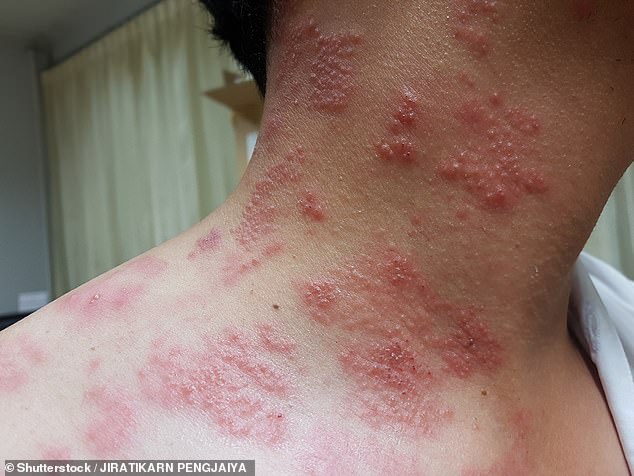<!–
<!–
<!– <!–
<!–
<!–
<!–
The NHS must do more to address low uptake of the shingles vaccine, a study suggests.
Last year it launched a vaccine called Shingrix for people over 70 to protect them from the skin condition, but the latest figures show that less than half of people aged 71 have received it.
By contrast, last year the flu vaccine was received by about 80 percent of people over 65 years of age.
And now, a review by health officials has found that sending postal invitations to those eligible to receive the crucial vaccine could significantly boost uptake.
More than 50,000 people get shingles each year and almost one in four develops it at some point in their lives. The condition is related to chickenpox, the highly contagious disease that causes blotchy, itchy rashes.

Less than half of 71-year-olds have been vaccinated against shingles, study finds


While it is not usually serious if detected as chickenpox at a young age, the virus can potentially reactivate later in life as shingles and appear as a red rash with blistering spots.
If contracted at a young age, chickenpox is usually not serious, but the varicella-zoster virus that causes it remains within the nerves of the spinal cord for life.
The immune system keeps it in check, but it weakens with age, potentially allowing the virus to reactivate and attack again as shingles, where it appears as a blistering, blotchy red rash.
It tends to settle on one side of the chest or abdomen, but can develop anywhere on the body. Often along with headaches and nausea, the rash can be extremely painful and last for several weeks. One-fifth of shingles patients will experience nerve pain for months after infection.
While officials are concerned that not enough people are taking up Shingrix’s offer, a study by the UK’s Health Security Agency, published last week in the medical journal Vaccine, found that GP practices in Wales that invited patients to receive the vaccine saw acceptance improve by ten percent.
“People are more likely to not know about the vaccine than to not want it,” says Professor Adam Finn, a vaccine expert at the University of Bristol.
‘Shingles is horrible. You would be crazy not to get the vaccine.
